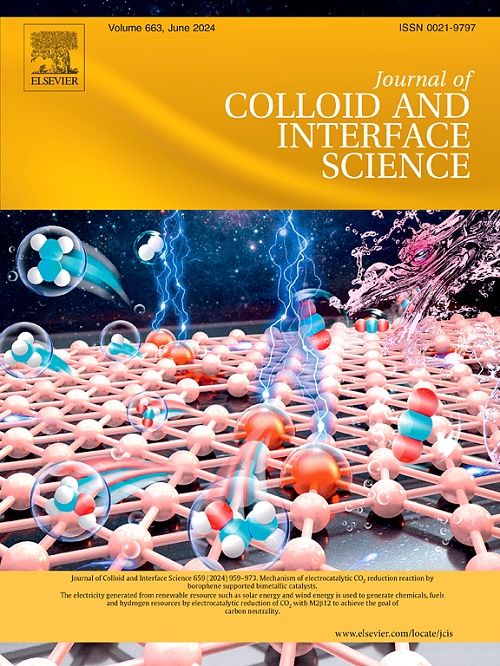Facile synthesis of a single-atom cobalt catalyst to enhance peroxymonosulfate oxidation to degrade emerging contaminants by visible-light regulation: From radical pathway to synergistic pathway
IF 9.4
1区 化学
Q1 CHEMISTRY, PHYSICAL
引用次数: 0
Abstract
In-situ modulation of the synergistic effect of both radicals and non-radicals is crucial in the activation of peroxymonosulfate (PMS). In this study, we show a layer-structured carbon nitride with anchored cobalt single atoms was facilely synthesized (0.2Co-CN), followed by an investigation of the mechanism and performance in activating PMS for the removal of emerging contaminants (ECs) assisted by visible light. The results indicate that under visible-light excitation, the catalytic system achieved 97.1% degradation of Norfloxacin (NOR) within 60 min, representing a 3.3-fold increase in kinetics compared to conditions without light. Experimental characterization reveals that the anchored single-atom Cobalt is prone to adsorbing and concentrating PMS, thereby favoring the activation; This observation is further supported by density functional theory calculations. The degradation mechanism shifts from a pure radical pathway to a synergistic pathway involving both radical and non-radical, under in-situ light irradiation. This light-assisted modulation significantly increases both the variety and concentration of reactive oxygen species(ROS), leading to effectively enhanced catalytic performance. The catalyst exhibits robust functionality across a broad pH range without metal ion leaching, possesses unmoved interference resistance without compromising efficiency, demonstrates excellent reusability without significant fatigue, and shows applicability to various ECs and diverse real-world water bodies, paving the road to potential industrial level applications.

通过可见光调节促进过氧单硫酸盐氧化降解新污染物的单原子钴催化剂的简单合成:从自由基途径到协同途径
自由基和非自由基的协同作用的原位调节在过氧单硫酸盐(PMS)的活化中是至关重要的。在这项研究中,我们展示了一种具有锚定钴单原子的层状结构氮化碳(0.2Co-CN)是很容易合成的,随后研究了在可见光辅助下激活PMS去除新兴污染物(ECs)的机制和性能。结果表明,在可见光激励下,该催化体系在60 min内对诺氟沙星(NOR)的降解率达到97.1%,比无光条件下提高了3.3倍。实验表征表明,锚定的单原子钴易于吸附和浓缩PMS,从而有利于活化;密度泛函理论计算进一步支持了这一观察结果。在原位光照射下,降解机制由单纯的自由基途径转变为自由基与非自由基共同参与的协同途径。这种光辅助调制显著增加了活性氧(ROS)的种类和浓度,从而有效地提高了催化性能。该催化剂在广泛的pH值范围内具有强大的功能,不会产生金属离子浸出,具有不变的抗干扰性而不会影响效率,具有出色的可重复使用性而不会产生明显的疲劳,并且显示出对各种ec和各种实际水体的适用性,为潜在的工业应用铺平了道路。
本文章由计算机程序翻译,如有差异,请以英文原文为准。
求助全文
约1分钟内获得全文
求助全文
来源期刊
CiteScore
16.10
自引率
7.10%
发文量
2568
审稿时长
2 months
期刊介绍:
The Journal of Colloid and Interface Science publishes original research findings on the fundamental principles of colloid and interface science, as well as innovative applications in various fields. The criteria for publication include impact, quality, novelty, and originality.
Emphasis:
The journal emphasizes fundamental scientific innovation within the following categories:
A.Colloidal Materials and Nanomaterials
B.Soft Colloidal and Self-Assembly Systems
C.Adsorption, Catalysis, and Electrochemistry
D.Interfacial Processes, Capillarity, and Wetting
E.Biomaterials and Nanomedicine
F.Energy Conversion and Storage, and Environmental Technologies

 求助内容:
求助内容: 应助结果提醒方式:
应助结果提醒方式:


